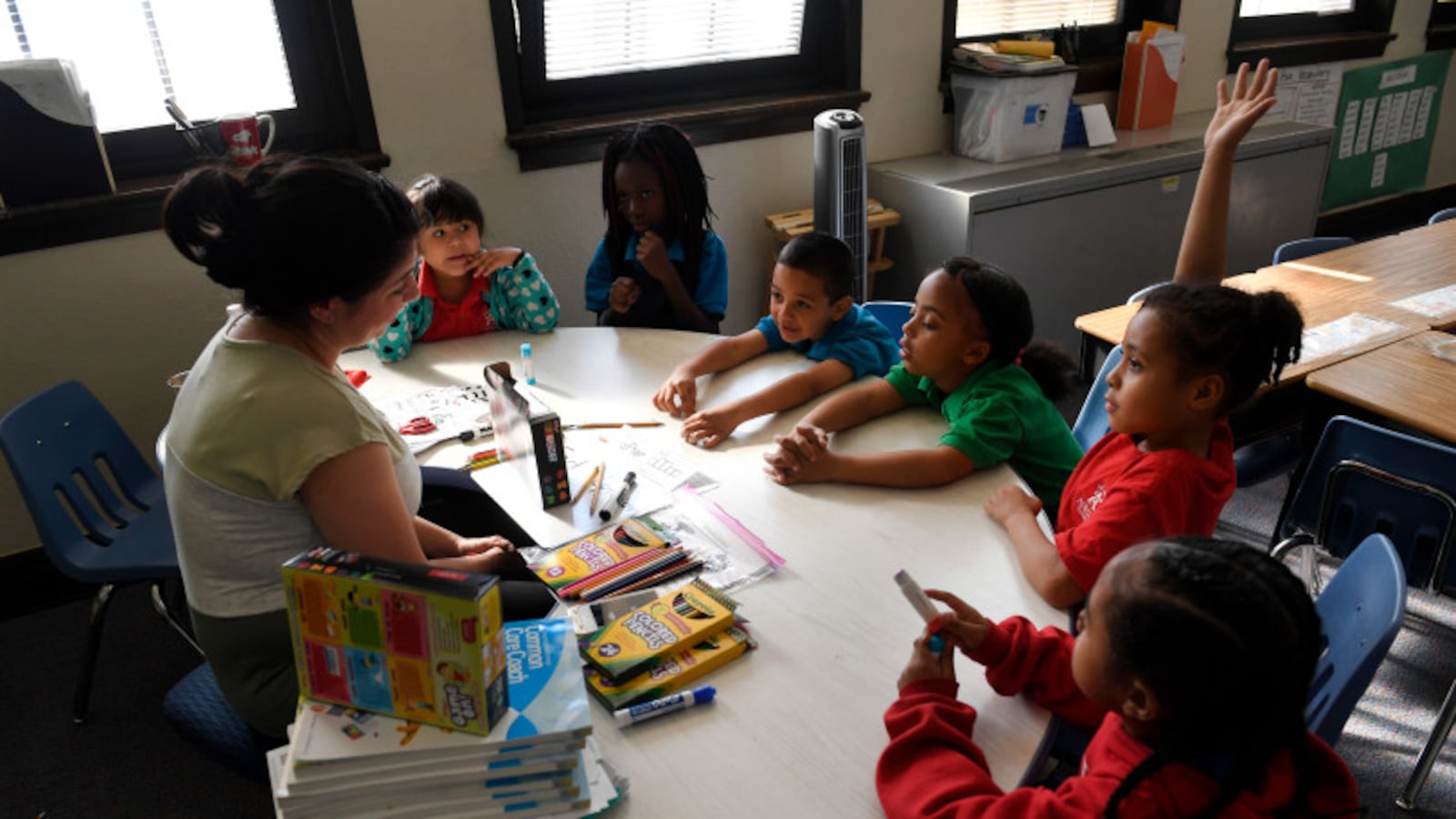The Trump administration recently made waves by removing Obama-era guidance that offered ways for school districts to consider students’ race in order to diversify and integrate schools. The rollback could have harmful consequences for students, according to a new study.
The paper offers a test case of the rule, and it suggests that move — at least if it affects any districts’ policies — could hurt academic outcomes, including college enrollment, by making racial segregation worse, although the study only focuses on a single district.
“There’s a general sense that student outcomes are going down in these schools that are more racially segregated from these race-neutral admissions,” said Jason Cook, a professor at the University of Pittsburgh and author of the study.
The paper, which has not been formally peer reviewed, focuses on an anonymous urban school district that, after a federal investigation in the early 2000s, was forced to end race-conscious admissions to its coveted magnet middle schools. To maintain some diversity in its student body, the district ran separate lotteries for black and non-black (largely white) students. After the federal mandate, though, the district put all students in one lottery, and in turn the schools became notably more segregated — rising from about 77 percent to 85 percent black.
After the policy from 2003 to 2007, the research finds that the spike in segregation corresponded to a decrease in college enrollment for black students by a couple percentage points. There was also an indication of modest declines in test scores in sixth grade and in high school graduation rates, though these results weren’t statistically significant for black students. There was no clear impact on 10th-grade test scores.
These effects aren’t huge, but neither was the increase in segregation, and the results generally point in a negative direction.
Separately, the paper shows that in general magnet schools in that district were less effective when they were made up of predominantly black students, perhaps because they have a higher concentration of struggling students and recruit lower-quality teachers.
The paper also shows that as schools became more predominantly black, more of their white students left, creating a vicious cycle that intensified segregation. “Racial segregation is self-perpetuating,” concludes Cook.
The district in question did not attempt to use race-neutral measures, like poverty status, to promote integration. Research, though, has shown that such approaches are less effective for achieving racial integration than considering race directly.
There is one particularly important caveat to the results, though: The policy change meant that more black students had access to in-demand, high-performing magnet schools. That is, in changing the lottery to stop what amounted to preferences for non-black students, the shift increased segregation but it also meant that a small number of black students had access to top schools they otherwise might not have.
That remains a key point of contention in other cities debating integration. In Hartford, Connecticut, for instance, a longstanding court decision has prioritized the creation of integrated magnets — done in part by giving white students from the suburbs preference in admissions to magnet schools in the city. After a local newspaper series looked into this practice, critics said the system was effectively shutting out local students from the best schools; supporters contended that the rules are necessary to prevent resegregation of those schools.
The latest study can’t answer knotty philosophical questions about how to divvy up seats in coveted schools, but it does suggest each side has a point — admissions rules do, by definition, keep some kids out, but removing those rules can lead to unintended consequences, including making those schools less effective.
Rucker Johnson, a professor at the University of California Berkeley who has studied school segregation and is writing a book on the topic, pointed out that the latest study has limits. “That particular paper is focused on one specific district, so even if it’s done really well, you still would want to consider whether [it applies in] other districts,” he said.
But Johnson said the findings are largely consistent with past research including his own, which focused on school desegregation efforts in the ’60s, ’70s, and ’80s. “For African-Americans we saw significant impacts,” he said. “High school graduation rates increased, college attendance and college completion rates increased, the type of colleges they attended were more selective, …[there were] increases in earnings, reductions in annual incidence of poverty.”
More recent research has shown that the resegregation of districts led to dips in high school graduation rates among black and Hispanic students. A school integration program on the San Francisco Peninsula caused jumps in test scores and college enrollment (though also arrest rates for non-violent crimes).
In recent decades, as court-mandated integration orders have ended, race-based segregation has gotten worse or held steady, depending on how it’s measured; income-based stratification has consistently worsened. The recent move by the Trump administration is not legally binding, and only a small number of districts have voluntary race-conscious integration policies in place.
Johnson, for his part, fears that defeatism has overtaken the urgency to integrate schools. Some people, Johnson said, have the mindset that “we can’t socially engineer integration.”
“The reality is we did socially engineer segregation,” he said. “It would be natural to understand that we might have to re-engineer that through some intentional policy.”


